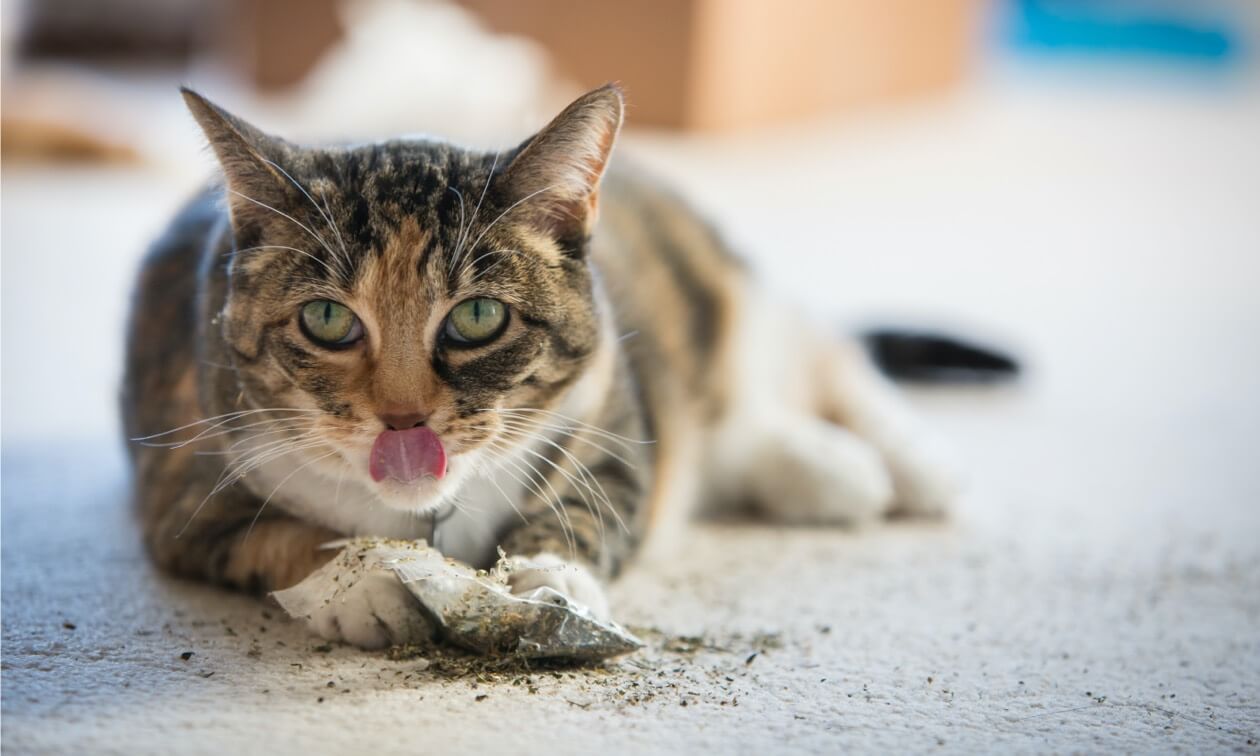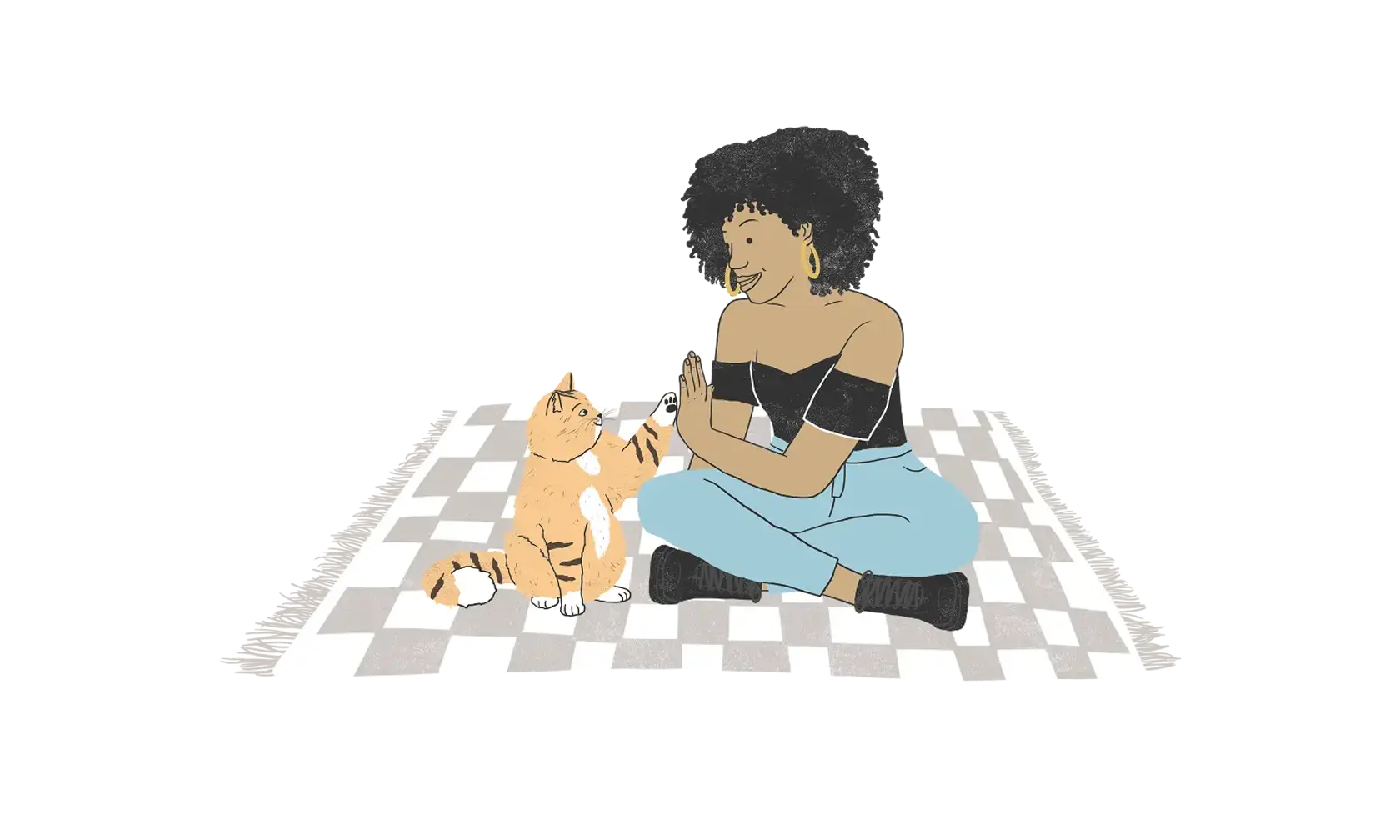The tongue is an interesting organ (and yes, it’s considered an organ) — especially cat tongues. Their barbed tongues assist with eating and grooming, and their flexibility helps with drinking. It also acts as a barometer of your cat's health. This innovative design is not limited to just the kitties who share your home — it's also seen in many other cat species in the wild. We could all learn a thing or two about our cat's tongue.
- Cat Tongues Have Barbs
The roughness of a cat's tongue is one of its most distinctive features. This sandpaper-like texture comes from hundreds of sharp, backward-facing barbs, called papillae, covering the upper surface of the tongue. Originally thought to be cone-shaped and solid, more recent research has found them to be scoop-shaped and hollow1.
If your cat tends to ingest things they shouldn't, like string or tiny bits of cardboard, it might not be intentional. Sometimes things get caught up on those backward-facing spines and are naturally directed to the back of the mouth, where they get swallowed. You might notice your cat's tongue making some strange movements as they try to spit the item out but have difficulty because of the spines. - Cat Tongues Help with Health and Wellness
The design of a cat's tongue has multiple functions to help with everyday activities, like eating, drinking, tasting, and grooming. The tongue itself provides a window into the cat's health status.- Eating
The protruding papillae help cats with eating by moving the food to the back of their mouths and wiping clean the bones of their prey. - Drinking
The flexible shape of a cat's tongue is unique. The tip of the tongue can be curled up and backward. This shape allows surface tension to pull water up during lapping. The cat then closes their jaws to capture the liquid, swallow it, and repeat. - Tasting
Just like people, cats have taste buds on their tongues. Of the four basic tastes — sweet, salty, bitter, and sour — they can taste salty, bitter and sour. Results are inconclusive cats can taste sweet or not. - Grooming
Those hundreds of sharp, backward-facing spines covering the tongue's upper surface act as excellent hooks to latch onto whatever they're licking. Working like a built-in comb, the papillae remove loose hair, lift dust and dry skin, and get rid of other debris. The papillae also absorb saliva through a process called wicking. When a cat grooms, this absorbed saliva is redistributed to the fur and skin to help them get clean. It even helps them cool off. The rhythmic motion of grooming with the tongue helps regulate body temperature, stimulate circulation, and evenly distribute natural oils on the coat. - Health Status
A cat's tongue provides insight into their health status. They are normally pink and moist with no excess saliva. Your cat may have a health issue if their tongue shows signs of discoloration, white patches, swelling, inflammation, cuts or sores, hangs out excessively, and/or drool. Contact your veterinarian immediately if you notice any unusual changes to your cat's tongue.
- Your Cat May Share Features with Other Feline Species
The unique design of this organ is not just present in your household feline. In the same study that discovered the papillae of cats are scoop-shaped and hollow, the researchers determined that the tongue papillae of six different species of the cat family (domestic cat, bobcat, cougar, snow leopard, tiger, and lion), spanning a 30-fold difference in body weight, are the exact same height and shape.1 - Cats Stick Their Tongues Out
When a cat sticks out their tongue, it's not the same as the intentional, mocking gesture we humans make in good fun. With cats, perhaps a better description is that the tongue is "hanging out" of their mouth because it's usually done unconsciously.
Often this act is harmless and done for many reasons. Some examples are:- While Sleeping/Relaxing
Cats are chilling out and in a calm state in this mode. Consequently, their muscles and joints loosen up, including the tongue, a muscular organ. - Flehmen Response
Cats have a special piece of equipment known as the vomeronasal organ (or Jacobson's organ). Located in the roof of the mouth, it contains ducts that lead to the mouth and nose. It acts as a scent analyzer. So, when a cat is interested in really exploring a certain smell, they will open their mouth, curl their upper lip, and jut their tongue out during inhalation. This action is called the Flehmen Response.
ZPC-02504
- Cats use hollow papillae to wick saliva into fur. Proceedings of the National Academy of Sciences. https://doi.org/10.1073/pnas.1809544115. Accessed July 26, 2022.



